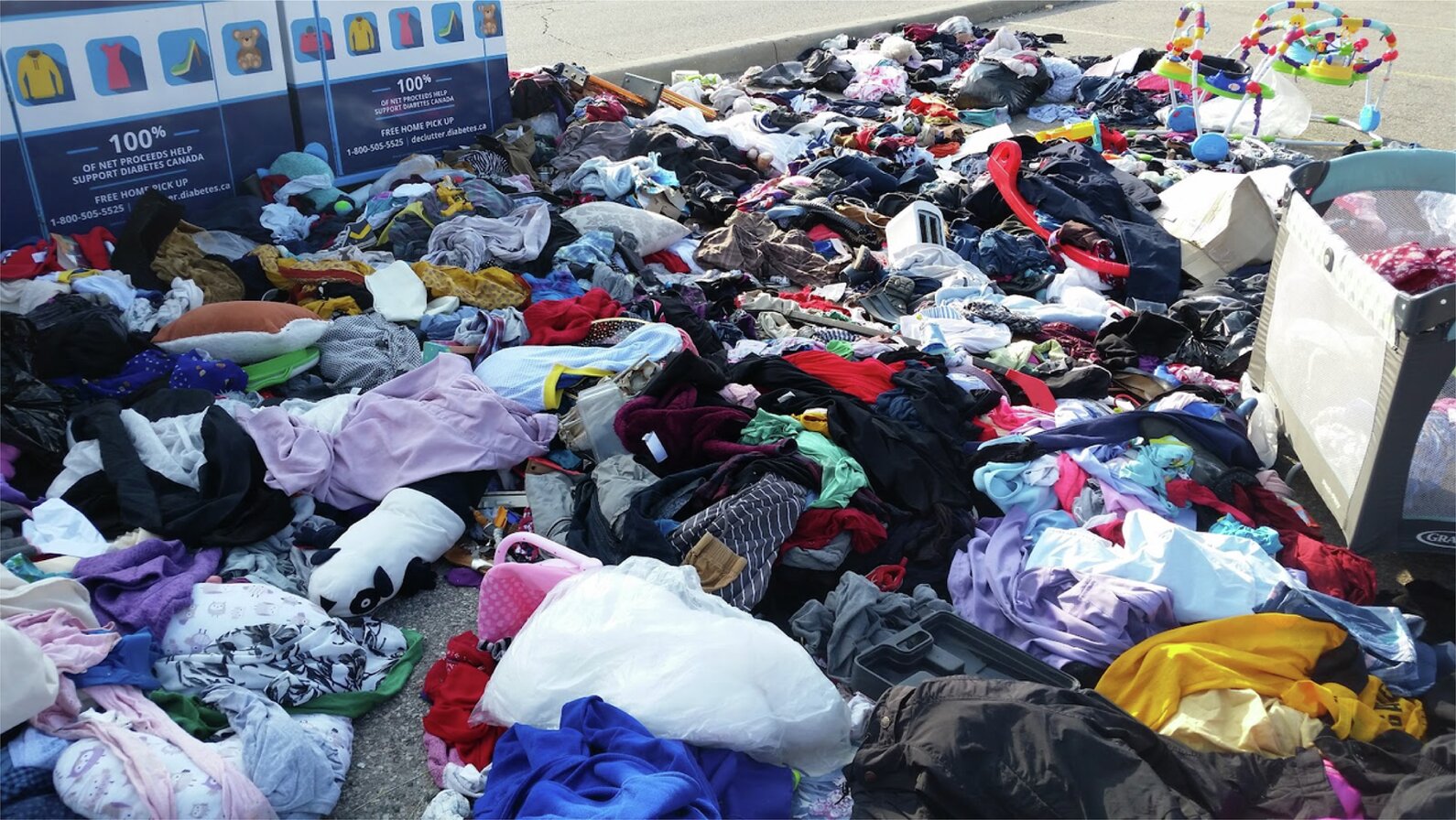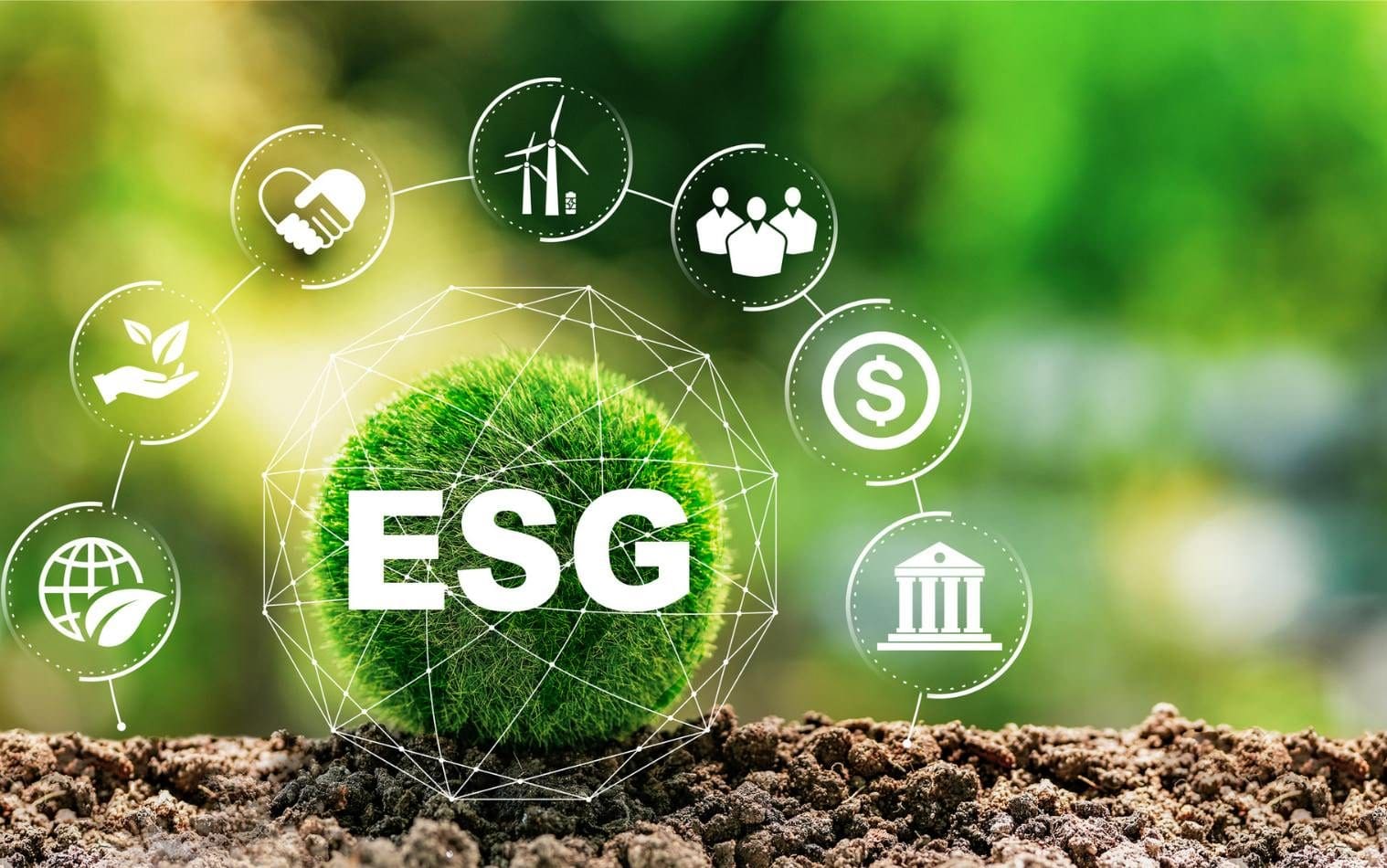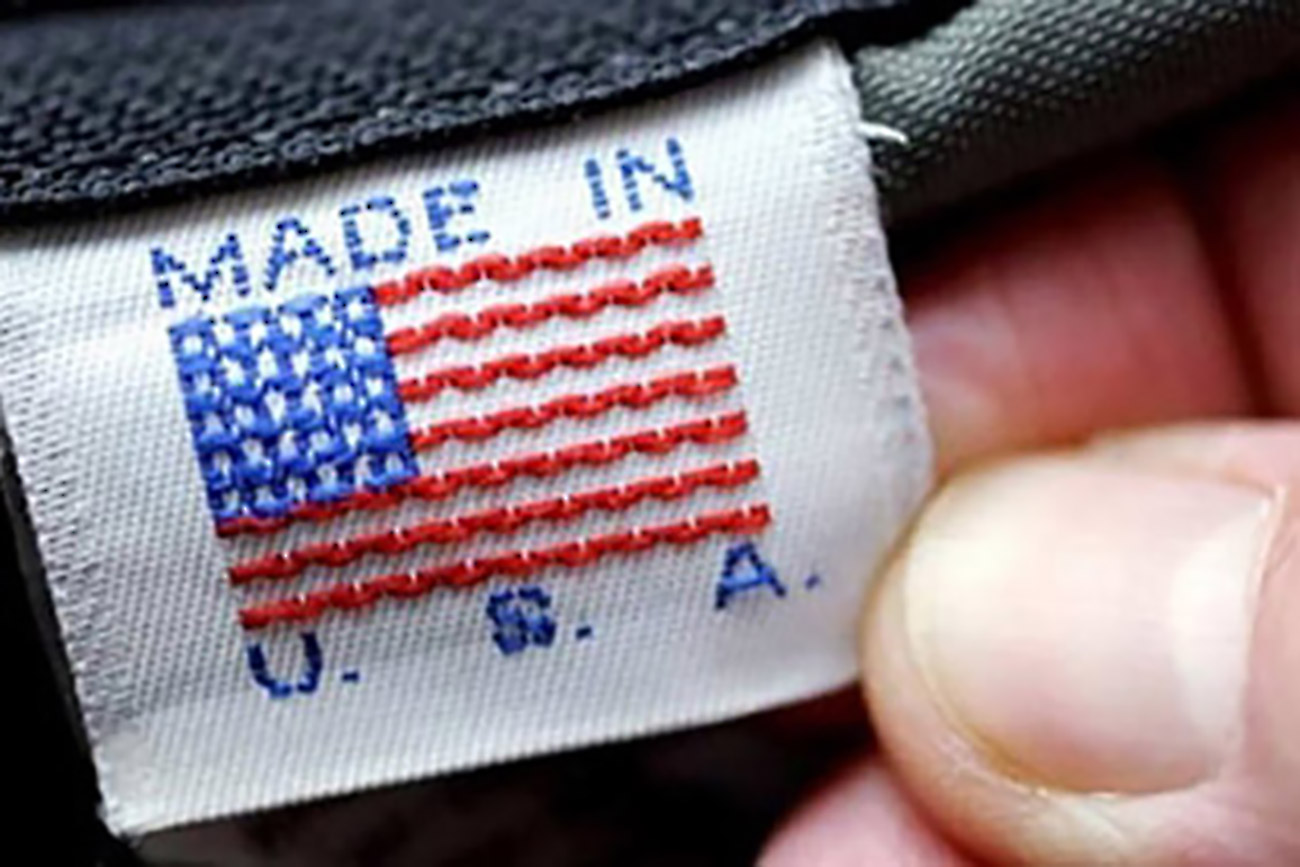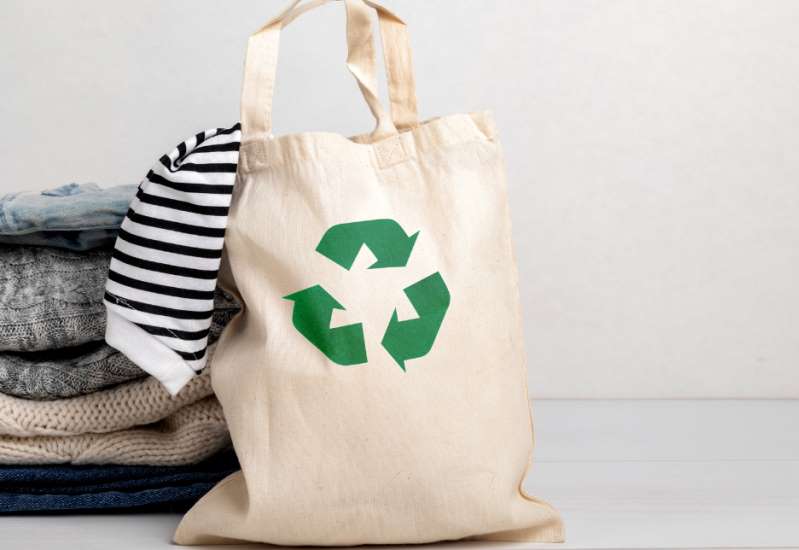FW
Parent company of Zara, Inditex is optimistic about expanding its presence in the United States, planning to open additional stores. This growth strategy remains in place despite recently announced trade tariffs, according to Oscar Garcia Maceiras, Chief Executive Officer.
Maceiras indicated, Inditex has not observed significant shifts in consumer spending across its major markets. Emphasizing the importance of the United States market, he noted, it is their second-largest market.
Parent company of Zara, Inditex is optimistic about expanding its presence in the United States, planning to open additional stores. This growth strategy remains in place despite recently announced trade tariffs, according to Oscar Garcia Maceiras, Chief Executive Officer.
Maceiras indicated, Inditex has not observed significant shifts in consumer spending across its major markets. Emphasizing the importance of the United States market, he noted, it is their second-largest market.
A German court has ruled against Adidas, restricting its ability to advertise its climate neutrality goals, following a lawsuit by the environmental NGO Environmental Action Germany (DUH). Delivered on March 25, 2025, the Nuremberg-Fürth Regional Court's decision prohibits Adidas from claiming climate neutrality by 2050 in its advertisements.
The court found Adidas's claims to be misleading to consumers because the company failed to provide concrete steps for achieving climate neutrality beyond 2030. Additionally, the court highlighted the ambiguous nature of the term ‘climate neutral’ and criticized Adidas for not clarifying its meaning, particularly regarding the use of carbon offsets.
Jürgen Resch, Federal Director, DUH accused Adidas of deceiving customers with its climate neutrality promises, emphasizing the need for transparent and verifiable climate action.
Adidas, however, maintains that the ruling has minimal impact, as the specific website wording in question was already adjusted in August 2024. The company reaffirms its commitment to emissions reduction, citing its alignment with Science Based Targets initiative and its ‘A’ rating from the Carbon Disclosure Project. Adidas also reported a 20 per cent reduction in absolute emissions, including supply chain emissions, since 2022.
The controversy surrounding carbon offsets plays a significant role in this case. Carbon offsets, used to compensate for emissions, are criticized for lacking standardized verification and potentially allowing companies to avoid genuine emissions reductions.
This lawsuit is part of a growing trend of ‘greenwashing’ litigation. Notably, Apple is facing a similar lawsuit in the US regarding its carbon-neutral claims for Apple Watches, and the Dutch airline KLM was also found to have made misleading sustainability claims. These cases underscore the increasing scrutiny of corporate environmental claims and the demand for greater transparency.
EIM (Environmental Impact Measuring), the leading global platform for assessing the environmental footprint of garment finishing, has released its “Innovations and Challenges in Denim Finishing: 2024 Report.” Based on data from over 115,000 denim finishing processes, the report sets a new sustainability benchmark and provides deep insights into current practices across the global textile industry.
According to the report, 63 per cent of denim finishing processes are now considered low environmental impact an encouraging shift toward cleaner production. However, the use of hazardous substances remains a significant concern, with 24 per cent of processes still involving pumice stones and potassium permanganate. These practices pose serious risks to both the environment and worker safety, underlining the urgent need for safer, more sustainable alternatives.
Water consumption remains a critical issue. The industry average stands at 30 liters per garment still above the ideal benchmark of 22.5 liters. The report recommends solutions such as optimizing rinse cycles, using less chemically intensive fabrics, and adopting eco-technologies like ozone treatments, e-flow systems, and smart foams to improve efficiency and lower water use.
Further strategies for improvement include selecting ZDHC-certified chemicals and automating manual processes to reduce chemical exposure and improve worker well-being. EIM emphasizes the importance of data-backed decision-making to drive progress.
Begona García, EIM platform creator and report co-author, said, “The industry has long lacked reliable tools to measure environmental impact. This report is a milestone for transparency and action.”
Designed as a global reference point, the annual report empowers brands and suppliers to track their performance, set improvement goals, and work collectively toward a more sustainable and responsible textile supply chain. The full report is available for download and will be updated annually to reflect ongoing progress.
Dutch designer Duran Lantink has been awarded the prestigious 2025 International Woolmark Prize, securing AU$300,000 to boost his business. Recognized for his sustainable and evolving collections, Lantink will also benefit from ongoing industry mentorship and support from Woolmark Prize retail partners.
Based in Amsterdam and Paris, Lantink founded his eponymous label in 2019, showcasing an innovative design approach that blends pre-loved garments and deadstock fabrics with new eco-friendly materials. His winning collection reimagined traditional knitting techniques through 3D reconstructed knitwear, incorporating historical Dutch knitting styles, recycled army sweaters, and contemporary woven check patterns.
Held in Milan, the event also saw Pieter Mulier receive the Karl Lagerfeld Award for Innovation, and Südwolle Group earn the Supply Chain Award. The winners were selected by an expert panel of judges, chaired by Donatella Versace, Italian Fashion Designer and featuring industry luminaries like IB Kamara, Law Roach, and Alessandro Sartori
Praising Lantink's collection, Versace highlighted its blend of respect for the fiber and a joyful vision of the future.
For over 70 years, the International Woolmark Prize has championed Merino wool's versatility and beauty, promoting sustainable growth through innovation and mentorship. The 2025 edition, artistically directed by IB Kamara, drew inspiration from the sun, symbolizing energy, renewal, and interconnectedness. This focus on sustainability and innovation underscores the prize's commitment to fostering a responsible future for the fashion industry.
Driven by domestic demand, China's textile machinery market is poised for continued growth. While the market registered a slight decline in 2024, it is projected to expand at a CAGR of 1.3 per cent to reach 13 million units by 2035. In terms of value, the market is expected to grow at a CAGR of 3.9 per cent to $70.5 billion by 2035.
In 2024, China’s consumption of textile machinery declined by 1.6 per cent to 11 million units, ending an eight-year growth streak. However, the overall trend remains relatively stable. Revenues from the market increased by 13 per cent to $46.2 billion, despite a longer-term trend of volatility. Production also declined by 2.6 per cent to 12 million units, while production value skyrocketed to $51.2 billion.
China’s textile machinery imports contracted by 26.4 per cent to 17,000 units to $1.4 billion during the year. Japan remains China's largest supplier, followed by Germany and Belgium. Weaving machines, spinning machinery, and knitting machines are the top import categories. Import prices averaged $83,000 per unit, with variations by product type and country of origin.
Exports also decreased to 18.4 per cent to 631,000 units, valued at $2.7 billion. India, the United States, and Bangladesh are the primary export destinations. Knitting machines are the dominant export product.
A recent USDA India Post report projects, India's area under cotton cultivation may decline by 3 per cent to 11.4 million hectare during MY 2025-26. This shift stems from farmers opting for more profitable crops like pulses and oilseeds, which offer quicker returns. This contrasts with the 11.8 million hectare dedicated to cotton in MY 2024-25.
Despite the reduced acreage, cotton production is expected to remain stable at 25 million 480-pound bales, mirroring the current year's output. Increased yields, projected at 477 kg per hectare, are anticipated due to concentrated production in well-irrigated regions.
Cotton cultivation in Punjab is expected to remain constant, while the are under cotton cultivation in Haryana is likely to decline by 5 per cent as farmers switch to paddy rice. Rajasthan's acreage will likely decrease by 2 per cent, with farmers favoring guar, maize, and mung beans. India's leading cotton producer, Gujarat is projected to see a 3 per cent decline due to farmers shifting to pulses, groundnuts, cumin, and sesame.
Maharashtra's cotton acreage is expected to stay consistent, as farmers explore alternatives like pigeon pea and maize after low soybean prices. Madhya Pradesh forecasts a 5per cent reduction, with farmers gravitating towards oilseeds and pulses. Southern states like Telangana, Karnataka, Andhra Pradesh, and Tamil Nadu may see a 7 per cent decrease due to ethanol production incentives favoring maize and rice.
Driven by steady international yarn and textile demand, the mill consumption of cotton is projected to rise slightly to 25.7 million bales Exports are expected to increase by 7 per cent to 1.5 million bales, supported by large carryover stocks and a weakening rupee. Imports are forecasted to decrease by 4 per cent to 2.5 million bales, though Indian mills will continue to rely on imported, contamination-free fiber.
The consumption of Extra Long Staple (ELS) cotton is expected to increase, with imports, primarily from the U.S., fulfilling demand. US ELS cotton maintains a significant market share in India, with a large portion re-exported as high-quality yarn and fabric. Concentrated in Central and Southern India, domestic ELS cotton production faces challenges due to low yields, high costs, and pest vulnerability.

The urgent need for a circular fashion revolution took center stage in Brussels and online, as the Global Fashion Agenda (GFA) recently convened crucial discussions aimed at transforming the textile industry. From a high-level policy breakfast at the European Parliament to a deep-dive podcast series, the message was clear: the time for incremental change is over; systemic transformation is the need of the hour.
Focus on policy and partnership
On March 26, the European Parliament became a hub for critical dialogue during the GFA's ‘Policy Breakfast: Re-shaping the Fashion Industry’. In collaboration with EURATEX, Finnish Textile & Fashion, Danish Fashion & Textile, and TEKO Swedish Textile & Clothing, the event brought together policymakers and industry leaders to forge a path towards a just and fair transition.
The panel, featuring experts including Sirpa Pietikäinen and Rasmus Nordqvist (Members of the European Parliament), Lars Fogh Mortensen (European Environment Agency), Dirk Vantyghem (EURATEX), and Federica Marchionni (GFA), addressed the evolving policy landscape. Key priorities included the adoption of circular business models and the effective implementation of the EU Textile Strategy.
"Let me insist on the need for more constructive dialogues between the industry and policy makers and speed action," emphasized Federica Marchionni, CEO of GFA. "I therefore, would like to encourage you, Members of the European Parliament, to help us create an industry that can be both creative and responsible, as well as competitive and sustainable."
The discussion highlighted the European textile sector's potential to drive sustainable innovation and economic growth, provided that coherent legislation, targeted incentives, and consistent enforcement are in place. Challenges like high energy costs, infrastructure gaps, and regulatory complexity were also identified as hurdles needing immediate attention. The recent EEA reports, showcasing the rapid rise in textile consumption and waste across the EU, further underscored the urgency for accelerated action.
The upstream circularity podcast
Simultaneously, the GFA launched its ‘Upstream Circularity Podcast’, a three-part series aimed at demystifying the technical innovations and systemic shifts required for effective textile recycling. Released on International Day of Zero Waste, the podcast emphasizes the urgent need to scale upstream circularity.
Hosted by Faith Robinson, Head of Content, GFA, the series features in-depth conversations with industry experts, providing practical insights on transforming waste into valuable resources. The stark reality is that only 0.3 per cent of materials used by the global textile industry come from recycled sources, despite existing technologies having the potential to unlock up to 80 per cent circularity.
"To support the transition to a circular fashion industry, we must implement solutions that transform waste into valuable resources," stated Federica Marchionni. "This podcast spotlights the industry leaders driving progress, providing inspiration and tangible guidance to accelerate change."
The podcast series, built on the findings of the GFA's "Upstream Circularity Playbook," looks into critical steps in establishing circular systems:
Episode 1: Textile waste segregation and traceability: Explores efficient waste identification, sorting, and tracing, featuring Marina Chahboune (Closed Loop Fashion) and Nin Castle (Reverse Resources).
Episode 2: Collecting, sorting, and use cases: Unpacks the challenges and opportunities of textile waste aggregation with insights from Abdur Razzaque (RECYCLE-RAW) and Ebru Özküçük Güler (RE&UP).
Episode 3: Product and systems design: Examines how brands and stakeholders can translate post-industrial recycling from theory to reality, featuring Alexander Granberg (BESTSELLER) and Karla Magruder (Accelerating Circularity).
The GFA's multifaceted approach, combining high-level policy discussions with practical, accessible content, underscores the organization's commitment to driving meaningful change. As the fashion industry faces increasing regulatory pressure and consumer demand for sustainability, these initiatives provide a crucial roadmap for a circular future.
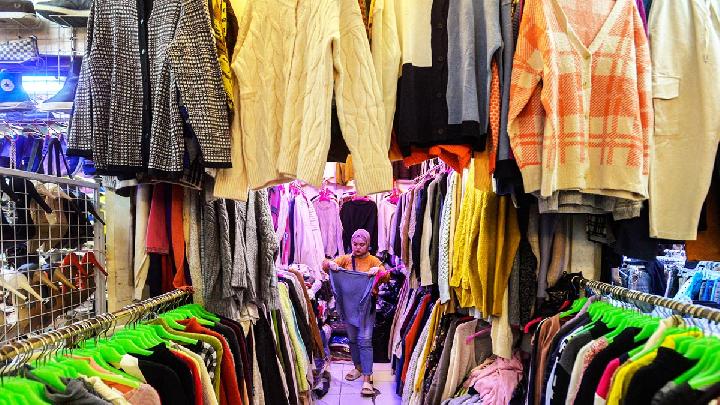
In a significant step towards speeding up the global shift to a circular economy, Accelerating Circularity, World Wildlife Fund (WWF), and BSR have announced a collaborative project, ‘Mapping Second-Hand Material Flows’. This initiative, supported by a kickoff grant from Laudes Foundation, aims to provide a comprehensive understanding of the route taken by used materials, paving the way for more sustainable and efficient resource utilization, with a particular focus on the second-hand clothing trade and global recycling industry.
The project addresses a critical knowledge gap: the lack of clear data on the movement and processing of second-hand materials. Currently, vast quantities of textiles, plastics, electronics, and other resources are discarded, often ending up in landfills or informal recycling systems with limited transparency. This lack of visibility hinders the development of robust circular economy strategies, especially when considering the social and environmental impacts on importing nations.
Closer look at second-material flow
The project will delve into the complexities of second-hand material flows, focusing on
Data collection and analysis: Rigorous data collection and analysis, building on current data and gathering new in-depth on-the-ground information, to map the journey of materials from collection points to processing facilities, including sorting, recycling, and reuse.
Identification of key stakeholders: Mapping the roles of various stakeholders, including collectors, sorters, recyclers, manufacturers, retailers, and crucially, exporters and importers, to understand their interactions and influence on material flows, and to promote equitable systems.
Environmental and social Impacts: Evaluating the environmental and social impacts of current practices, including waste generation, pollution, and labor conditions, with an emphasis on local environmental, social, and economic factors in importing countries.
Development of traceability systems: Exploring the potential for developing traceability systems to enhance transparency and accountability in the second-hand material market.
Case studies: The project will also be built around case studies from different regions and industries, with a focused approach to mapping in depth the second-hand material flows from key exporters (US, UK, EU) to five importing countries.
Actionable insights: The initiative aims to provide actionable insights on redesigning textiles for reuse, supporting local infrastructures, and aligning exports with legislative frameworks.
Human rights and livelihoods: Promoting opportunities to improve human rights, livelihoods, and environmental stewardship in importing countries as recycling systems scale.
The importance of mapping
The current linear economy, where resources are extracted, used, and discarded, is unsustainable. A circular economy, on the other hand, aims to minimize waste and maximize resource utilization by keeping materials in circulation for as long as possible.
Most important is the environmental benefit as by understanding and optimizing second-hand material flows, the project can help reduce waste, conserve resources, and mitigate climate change. For example, as per the Ellen MacArthur Foundation, a circular economy for plastics could reduce the volume of plastics entering oceans by 80 per cent annually.
Also, a well-functioning second-hand material market can create new economic opportunities, including jobs in collection, sorting, recycling, and remanufacturing. Mapping material flows, particularly in the context of the global clothing trade, can also help identify and address social inequities within the waste management sector, ensuring fair labor practices, improved working conditions, and just transition pathways for circular systems globally. This work will build a more ground-proofed foundation for effective policy and infrastructure development.
The project is expected to deliver its initial findings within a timeframe, providing a valuable resource for policymakers, businesses, and civil society organizations working to advance the circular economy.
A global leader in sustainable fiber and technology solutions for the apparel industry, The Lycra Company has partnered with the Sapphire Group-owned textile mill, Diamond Denim to launch an innovative denim collection at Kingpins Amsterdam, to be held from April 16-17, 2025
Titled, ‘7 Styles for 7 Days,’ the capsule collection showcases garments made with bio-derived Lycra EcoMade fiber. It highlights the significance of sustainable stretch denim in elevating both men's and women's wardrobes while significantly reducing environmental impact. Each piece in this collection is designed to seamlessly fit into a modern lifestyle, allowing the wearer to transition effortlessly throughout the week.
Ebru Ozaydin, Global Product Category Director - Denim, Wovens, and Ready-to-Wear, The Lycra Company says, Diamond Denim was among the first mills globally to acquire renewable fiber from the company to create four high-performance fabrics that form the foundation of this versatile collection, ideal for any occasion.
Later this year, bio-derived Lycra EcoMade fiber, made with QIRA, will be commercially available. This sustainable solution, composed of 70 per cent renewable dent corn grown annually in Iowa, has the potential to reduce the carbon footprint of Lycra fiber by up to 44 per cent, while maintaining the original LYCRA fiber's performance.
Diamond Denim remains dedicated to adopting sustainable practices in textile production, states Jayesh Mandalia, Head –Design, Diamond Denim. The company’s partnership with The Lycra Company helps deliver low-impact, high-performance denims to consumers, while also advancing its decarbonization goals.
The 7 Styles for 7 Days collection will be displayed at Kingpins Amsterdam, located at the Sugar Factory in Halfweg, Netherlands. As a leading provider of innovative fiber and technology solutions for the global apparel and personal care industries, The Lycra Company is committed to offering sustainable products made from renewable, pre-, and post-consumer recycled materials that reduce waste and promote circularity.
Headquartered in Wilmington, Delaware, United States, the company owns well-known brands such as Lycra, Lycra HyFi, Lycra T400, Coolmax, Thermolite, Elaspan, Supplex and Tacgactel. The Lycra Compay adds value to its customers' products by providing unique innovations that meet consumer demands for comfort and long-lasting performance.


